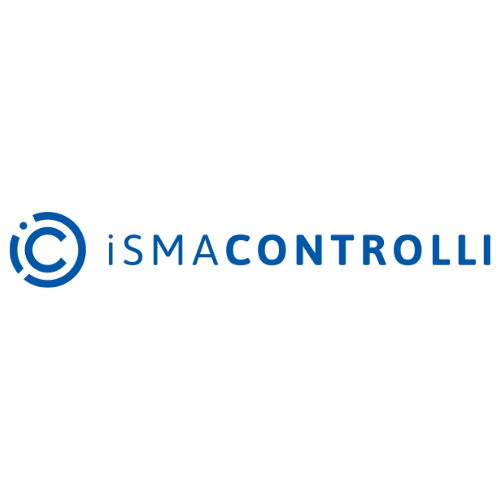
Efficiency Unleashed: Transforming Spaces with Cutting-Edge Building Automation Systems
What is Building Automation (BMS)?
Building Automation Systems (BAS) represent the pinnacle of technological integration in modern structures. These systems seamlessly orchestrate the intricate dance between various building components, optimizing energy usage, enhancing occupant comfort, and streamlining operational efficiency. Through a network of sensors, controllers, and intelligent devices, BAS monitors and manages diverse systems such as HVAC, lighting, security, and more. The beauty of a well-implemented BAS lies in its ability to respond intelligently to changing conditions, learning from patterns, and proactively adjusting settings for maximum efficiency. From climate control that adapts to occupancy patterns to smart lighting systems that synchronize with natural light, BAS transforms static spaces into dynamic, responsive environments, ultimately offering a sustainable and comfortable experience for occupants while significantly reducing operational costs. In essence, building automation is the silent conductor orchestrating a symphony of technologies to create spaces that are not just efficient but also intelligent in their responsiveness to the needs of both the building and its occupants.
Why Adopt BMS in Buildings?
Choosing Building Automation Systems (BAS) is a strategic decision that transcends mere technological adoption; it's an investment in the efficiency, sustainability, and future-readiness of a building. BAS empowers facility managers and owners with unprecedented control over various building systems, leading to substantial energy savings and operational cost reductions. By providing real-time data and insights, BAS allows for informed decision-making, optimizing resource usage and improving overall building performance. The ability to remotely monitor and control systems ensures a proactive approach to maintenance, minimizing downtime and extending the lifespan of equipment. Beyond financial advantages, BAS significantly enhances occupant comfort, creating adaptive and personalized environments. As sustainability becomes a paramount concern, BAS plays a pivotal role in reducing the environmental footprint of buildings by intelligently managing energy consumption. The versatility of BAS, its scalability, and seamless integration capabilities make it a future-proof solution, aligning buildings with the evolving landscape of smart technologies. In essence, choosing BAS is not just a technological upgrade; it's a commitment to operational excellence, sustainability, and a superior experience for both building operators and occupants.
Advantages and Disadvantages of BMS (BAS)
Advantages of Building Automation Systems (BAS):
Energy Efficiency: One of the primary benefits of BAS is its capacity to optimize energy consumption. By intelligently managing HVAC, lighting, and other systems, BAS helps reduce energy waste, leading to significant cost savings and a smaller environmental footprint.
Cost Savings: Through proactive monitoring and maintenance, BAS helps identify and address issues before they escalate, minimizing downtime and reducing repair costs. Additionally, the energy savings contribute to long-term financial benefits.
Enhanced Comfort and Productivity: BAS allows for personalized control of environmental conditions, contributing to occupant comfort. A comfortable and well-controlled environment has been shown to boost productivity and well-being among building occupants.
Remote Monitoring and Control: Building managers can monitor and control building systems remotely, providing flexibility and the ability to respond quickly to changing conditions. This is particularly advantageous for multi-site facilities.
Data-Driven Decision-Making: BAS generates data that can be analyzed to gain insights into building performance. This data-driven approach enables informed decision-making for ongoing optimization and future planning.
Improved Security: BAS often integrates security systems, enhancing overall building security. This can include access control, surveillance, and alarm systems.
Disadvantages of Building Automation Systems (BAS):
High Initial Cost: Implementing a comprehensive BAS requires a significant upfront investment. This can be a barrier for smaller businesses or organizations with budget constraints.
Complexity: The complexity of BAS can pose challenges during the installation and integration phases. Adequate training is essential for personnel to effectively manage and troubleshoot the system.
Compatibility Issues: Integrating BAS with existing equipment and systems can sometimes be challenging, especially in older buildings. Compatibility issues may require additional investments or modifications.
Cybersecurity Concerns: The increased connectivity of building systems raises cybersecurity concerns. BAS, if not properly secured, can be vulnerable to cyber-attacks, leading to potential disruptions or unauthorized access.
Maintenance Challenges: While BAS can contribute to proactive maintenance, it also requires regular maintenance itself. Failure to maintain the system can lead to malfunctions, reducing its effectiveness and potentially causing disruptions.
Dependency on Technology: Buildings heavily reliant on BAS may face challenges during system outages or failures. This dependence on technology emphasizes the importance of backup systems and contingency plans.
In conclusion, while Building Automation Systems offer numerous advantages in terms of efficiency, cost savings, and occupant comfort, they also come with challenges related to cost, complexity, and security. The decision to implement a BAS should be carefully weighed against the specific needs and resources of the building owner or manager.
How 3S Electronics as a Manufacturer and Systems Integrator May Help Minimize Disadvantages of BMS?
As a company manufacturing electronics and carrying multiple brands of Building Automation Systems (BAS), there are strategic approaches to leverage the advantages of BAS while mitigating potential disadvantages.
1. Comprehensive Training and Support:
Advantage Maximization: Provide thorough training for clients and personnel on the installation, operation, and maintenance of your BAS. Ensure they understand the full potential of the system to maximize its advantages.
Disadvantage Mitigation: Offering ongoing support and training programs can mitigate the complexity associated with BAS. This ensures that users are equipped to troubleshoot issues, reducing dependency on external support.
2. Scalable Solutions:
Advantage Maximization: Design BAS solutions that are scalable, allowing clients to start with a basic system and expand as their needs grow. This flexibility aligns with the scalability advantage of BAS.
Disadvantage Mitigation: For smaller businesses with budget constraints, offer modular solutions that can be implemented gradually, addressing the initial cost concern.
3. Interoperability and Compatibility:
Advantage Maximization: 3S emphasizes interoperability in BAS designs to ensure compatibility with a wide range of building systems and equipment. This enhances the versatility of products.
Disadvantage Mitigation: Develop comprehensive integration protocols to address compatibility challenges, especially in retrofit projects. We are a solution provider that excels in seamless integration.
4. Cybersecurity Measures:
Advantage Maximization: 3S invests in and works with partners to ensure robust cybersecurity features for BAS, assuring clients of the safety of their data and systems.
Disadvantage Mitigation: Regularly update and patch your systems to address potential vulnerabilities. We collaborate with cybersecurity experts to stay ahead of emerging threats.
5. Customization and Consultation:
Advantage Maximization: 3S is a provider of customizable solutions. We take pride in our close work with clients to understand their unique needs and tailor BAS configurations accordingly.
Disadvantage Mitigation: 3S offers a strong consultation service that can help overcome compatibility issues and ensure that clients get the most out of their system. This approach also aids in addressing the complexity of implementation.
6. Continuous Innovation:
Advantage Maximization: 3S stays at the forefront of technological advancements in BAS. Innovates to introduce features that enhance energy efficiency, user-friendliness, and integration capabilities.
Disadvantage Mitigation: 3S regularly updates and upgrades their products to address any potential maintenance challenges. This continuous innovation can also counteract the perception of dependency on outdated technology.
7. Partner Collaboration:
Advantage Maximization: 3S is a distributor of multiple BAS brands by offering comprehensive solutions. 3S collaborates with manufacturers to ensure products seamlessly integrate with various systems.
Disadvantage Mitigation: 3S clearly communicates the advantages of each brand they carry and offer guidance to clients in choosing the most suitable system for their specific requirements. This collaborative approach can overcome any perceived limitation in brand dependency.
By adopting these strategies, 3S positions itself as a leader in the BAS market, capitalizing on the advantages while proactively addressing potential challenges. This comprehensive approach ensures that our products and services meet the diverse needs of clients, fostering long-term relationships and establishing our brand as a trusted name in building automation.
Complexitiy Simplified
Building Automation Systems (BAS) can be intimidating to some due to misconceptions and fears rooted in misunderstanding. Here are common reasons for this apprehension and how we can simplify the concept to alleviate concerns:
1. Complexity and Technical Jargon:
Misunderstanding: The technical terminology and complex nature of BAS can overwhelm individuals, creating a perception that it's too complicated to understand.
Simplification: We break down the technical jargon into layman's terms and train personnel on technical language. Use analogies and real-world examples to explain how BAS is like the central nervous system of a building, orchestrating different functions seamlessly.
2. Cybersecurity Concerns:
Misunderstanding: With increased connectivity, there's a fear of security breaches and unauthorized access to sensitive information, making people hesitant to embrace BAS.
Simplification: We emphasize the robust cybersecurity measures in place. Just like any technology, BAS undergoes stringent security protocols to safeguard data and prevent unauthorized access. Highlighting encryption and secure access controls can alleviate these fears.
3. Perceived High Costs:
Misunderstanding: People may believe that implementing BAS is prohibitively expensive, deterring them from exploring its benefits.
Simplification: Breaking down the cost structure, showcasing the long-term savings achieved through energy efficiency and reduced maintenance costs may convince clients to implement BAS measures in properties. Enabling scalable solutions that can be implemented gradually, making it more financially viable.
4. Lack of Control:
Misunderstanding: Some individuals fear a loss of control over their environment, assuming that automation means relinquishing personal control.
Simplification: BAS is designed to enhance, not replace, human control. Users can customize settings, and the system adapts to their preferences, providing a more comfortable and controllable environment.
5. Fear of System Failures:
Misunderstanding: There's an apprehension that if the system fails, it might lead to widespread disruptions and inconveniences.
Simplification: There are built-in redundancies and fail-safes within BAS. Regular maintenance and updates are conducted to minimize the risk of system failures, ensuring a reliable and resilient operation.
By addressing these common misconceptions and simplifying the concept of BAS through clear communication, relatable examples, and a focus on user benefits, we can demystify building automation and foster a more positive perception among individuals who might initially be apprehensive. Education and transparency play crucial roles in overcoming resistance and encouraging the adoption of these transformative technologies.
Brands We Parter With















